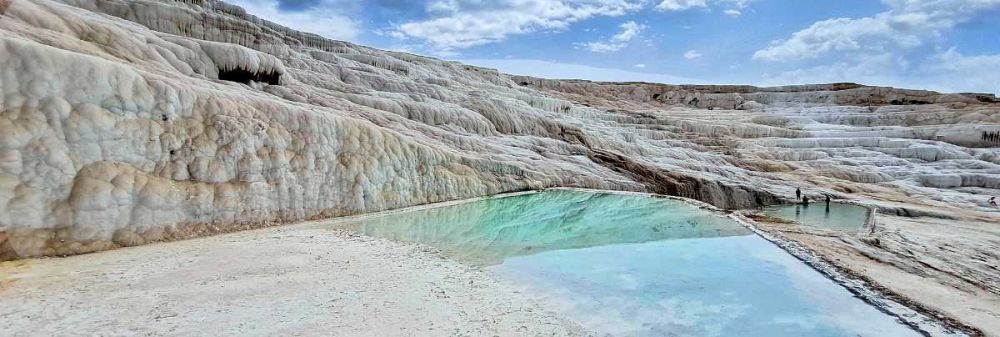

The natural wonder of Pamukkale, located in southwestern Turkey, has been a magnet for visitors for centuries. Known for its unique geological formations of white travertine terraces, Pamukkale, which translates to "Cotton Castle" in Turkish, is not just a site of natural beauty but is also steeped in history with the ancient city of Hierapolis built on top of it.
Historically, Pamukkale's terraces were formed by the flowing waters rich in calcium carbonate, which precipitated and formed a landscape of chalky white terraces. It has been a site of human settlement since at least the 2nd century BC. The ancient Greco-Roman and Byzantine city of Hierapolis was established on top of the ‘cotton castle’ and became a cultural hub but also a center for healing, with many people flocking to its thermal springs believed to have medicinal properties.
In the 20th century, the area began to see a rise in tourism. Pamukkale was declared a UNESCO World Heritage Site in 1988, which elevated its status in the eyes of international tourists and brought about stricter conservation measures. Over the years, the influx of visitors from both domestic and international sources led to the development of modern facilities and infrastructure to support tourism.
The popularity of Pamukkale as a tourist destination rose dramatically throughout the 1980s and 1990s. Unfortunately, this brought challenges related to preservation of the delicate travertine formations. Over-commercialization and the unchecked flow of tourists damaged parts of the natural beauty that the visitors came to see.
In response, Turkish authorities and international organizations took steps to protect and restore Pamukkale. Access to the terraces was restricted, hotels that were draining the thermal waters were demolished, and artificial pools were created to distribute the pressure on natural sites. As sustainable tourism became more important globally, Pamukkale adapted to ensure that tourism growth did not come at the expense of its natural wonders.
In recent times, Pamukkale has witnessed a new kind of tourism that focuses on heritage, wellness, and eco-friendliness. Tourists can visit the travertine pools, the ancient ruins of Hierapolis, including a well-preserved amphitheater and the Temple of Apollo, the Cleopatra Antique Pool, and the Pamukkale Natural Park, which offers a serene ecological environment to explore.
Additionally, visitors often enjoy activities such as hot air balloon rides over the travertine terraces, providing spectacular views and an unforgettable experience. With the rise of social media, Pamukkale has also become a popular destination for visitors looking to capture its otherworldly landscape in photos and videos, contributing to its ongoing popularity.
Through careful management and a focus on sustainable and respectful tourism practices, Pamukkale has maintained its status as one of Turkey’s most treasured and visually stunning destinations. The site continues to enchant visitors with its historical depth, therapeutic waters, and breathtaking natural beauty.